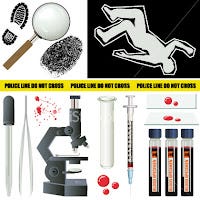Forensic evidence should meet scientific standards.

For decades, largely unrealized by judges, many of the forensic practices admitted into judicial proceedings have been without scientific foundation or any other logically acceptable basis other than observational (inductive) study by experimenters untrained in experimental process.
Most troubling are the declarations of certainty associated with proffered expert opinions in those unfounded practices as expressed by examiners in criminal proceedings, such as in firearm/toolmark identification. Despite the lack of true scientific foundation, firearm/toolmark examiners typically state to a practical certainty that a defendant’s gun was the only possible firearm that could have fired the fatal bullet in a murder. The identification is made on the basis of scratches (striae) and/or impressions on the bullets and comparisons with defendants’ guns.
When examiners confidently declare individualizations (specific source attributions) between crime scene evidence and evidence seized from an eventual defendant without adequate foundational statistical studies, the testimony constitutes nothing more than intuited opinion or speculation, even if an educated guess, rather than evidence-based testimony.
Largely because there has been little or no extrajudicial interest in most forensic practices in past decades other than DNA, forensic procedures such as hair and fiber analyses, bitemarks and comparative bullet lead analysis (CBLA) were developed through empirical induction (observational study) by the practitioners themselves, almost exclusively nonscientists. As noted by a 2009 National Academy of Science committee report, “The fact is that many forensic tests — such as those used to infer the source of firearms or bitemarks — have never been exposed to stringent scientific scrutiny. Most of these techniques were developed in crime laboratories to aid in the investigation of evidence from a particular crime scene, and researching their limitations and foundations was never a top priority.”
Although observational study (induction) is a useful basis for decision-making in everyday life (e.g., purchasing a vehicle or new shoes based on favorable outcomes of past transactions), it is a particularly tenuous process for forensic experimentation or scientific hypothesis testing without appropriate statistical inference.
The 2009 National Academy of Science committee report, “Strengthening Forensic Science in the U.S.: A Path Forward,” also reported that, “With the exception of nuclear DNA analysis, however, no forensic method has been rigorously shown to have the capacity to consistently, and with a high degree of certainty, demonstrate a connection between evidence and a specific individual or source.” It further observed that, again except when it addresses nuclear DNA analysis that has been properly conducted, forensic testimony at trials often exceeds the limitations of mainstream science.
The perils of overstating certainty in forensic testimony are highlighted in the following Texas examples involving various forensic practices that demonstrate unfounded (exaggerated) inference, proven misattributions (false positives), and unacceptable rates of practice error, some of which have led to exonerations or retracted forensic testimony due to the realization of overstated testimony by courts and proponents of the evidence.
The uses of bitemarks and hair/fiber testimony at trial are today greatly reduced, and the forensic practice of CBLA has been discontinued. There is much greater awareness of the tenuous or nonexistent foundations associated with these techniques and of the consequent limitations to opinions proffered in court testimonies. Other types of forensic techniques and their associated testimonies are now being called into question at trials because of the paradigm shift in recognition of limitations to heretofore sacrosanct forensic practices, virtually all of which were developed within an insular community of forensic examiners with virtually no true scientific oversight.
The relatively recent paradigm shift is undoubtedly a direct result of increased awareness, interest, and scrutiny by the mainstream scientific and academic communities, and very gradually by jurists based on challenges raised by the defense bar. Additionally, prosecutors are arguably under pressure to present an increasing amount of forensic evidence for many crimes because of unrealistic portrayals of forensic science on television by CSI- and NCIS-type programs and outcomes of high-profile trials where juries demanded more position-supporting forensic evidence.
Committees in both houses of Congress and a working group in the White House are attempting to facilitate assistance from the mainstream scientific community to sort these issues out.
Many testimonies are not based upon, or limited to, known or best available evidence and/or that expressions of certainty associated with proffered opinions generally constitute speculation. Examiners may believe that their opinions are based upon scientific fact, but unless these hypotheses, assertions, claims, and/or premises have been refereed and published in mainstream scientific journals rather than the in-trade publications of the insular forensic community, such opinions are unproven and can be very misleading to jurists or, worse, be the basis of inappropriate rulings or verdicts.
Terms used by expert witnesses expressing degrees of association between and among evidentiary material and particular people or objects can have a profound effect on how the triers of law and fact in criminal and civil matters perceive and evaluate evidence. Such terms include, but are not limited to, “match,” “consistent with,” “identical,” “similar in all respects tested,” and “cannot be excluded as the source of.”
The forensic disciplines have not reached agreement or consensus on the precise meaning of any of these terms. Some of these terms may be acceptable for expressions of test results or opinions, but only when the relevant limitations are clearly articulated to the triers of law and fact. Additionally, proper uncertainty statements are necessary, including mainstream, scientifically supported random-match probabilities for coincidental matches.
http://www.statesman.com/news/news/opinion/make-forensic-evidence-meet-standards-of-science/nTWHn/


